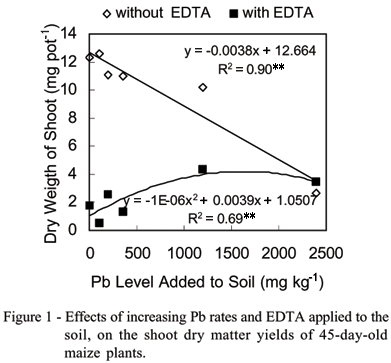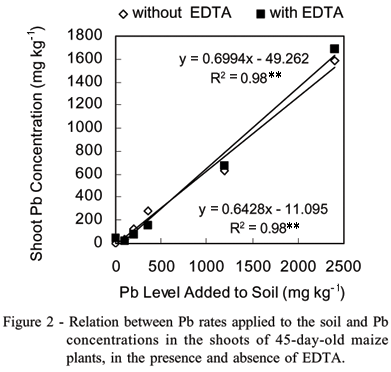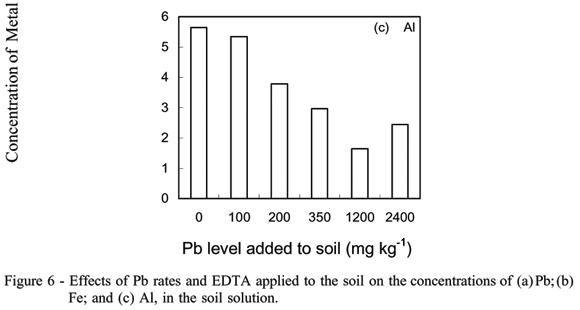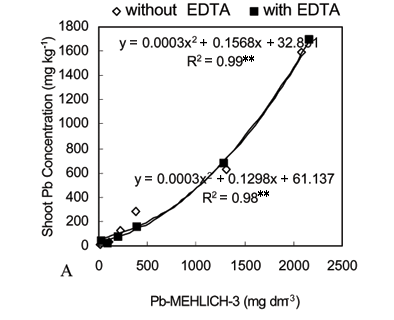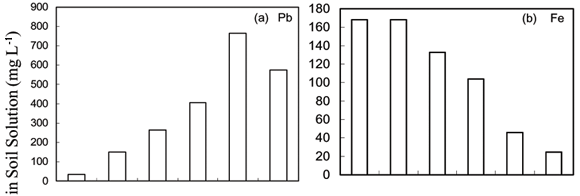One of the most viable strategies to restore metal contaminated soils is the introduction of plants specialized in their accumulation or able to tolerate very high metal concentrations. This research evaluated: i. the maize as a Pb-accumulator plant; ii. the effects of EDTA-chelating agent for Pb-uptake by maize; iii. amending effect of EDTA on the soil Pb-availability using different extracts. Treatments consisted of Pb rates (100; 200; 350; 1,200 and 2,400 mg kg-1) applied to a Rhodic Hapludox in the form of Pb3(NO)2 with (0.5 g kg-1) and without EDTA. Lead concentrations were determined in maize plant shoots. Soil available Pb was obtained using DTPA, Mehlich-3 and saturation solutions methods. Ionic speciation in the soil solution was performed using the software Visual-Minteq. Although a low t value was found (t <0.70), Pb concentration were high (>1,500 mg kg-1 of Pb) in maize shoots regardless of EDTA addition. Maize plants treated with EDTA had lower dry matter yield, mainly due to toxic levels of Fe and Al of the Oxisol. All extracting solutions were effective to determine available Pb in soil samples, but the saturation extract is a more difficult and time consuming procedure. At low and medium Pb levels, the plants grew less on EDTA, therefore the phytoextration process was less efficient. The addition of EDTA to the soil is not recommended with the purpose of increasing Pb absorption by maize plants.
Mehlich-3; DTPA; phytoremediation; available Pb; ionic speciation

